AMD Pensando DSC2-25G Hardware Overview
The AMD Pensando DSC2-25G is the company’s dual 25GbE DPU with the advantage that it is a low-profile card.
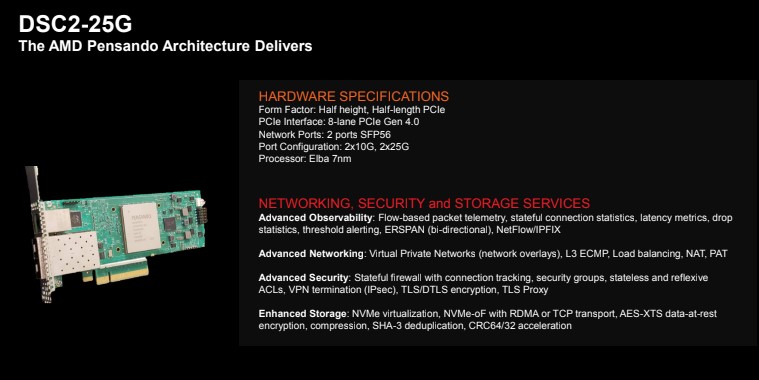
The card still uses a 7nm Elba processor, but only has a PCIe Gen4 x8 interface since it is a lower-bandwidth card than the dual 100GbE version.
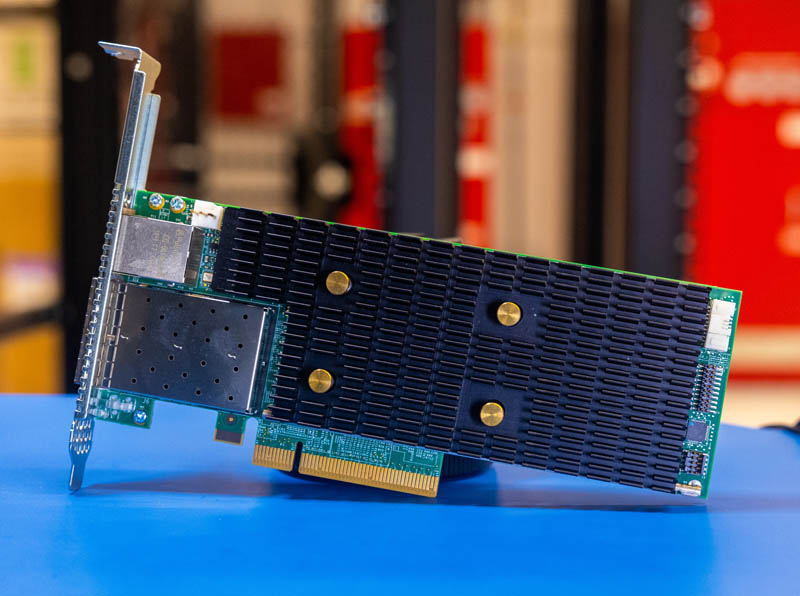
Here is the Elba processor. One can also see that there are half as many DRAM packages on this DPU.
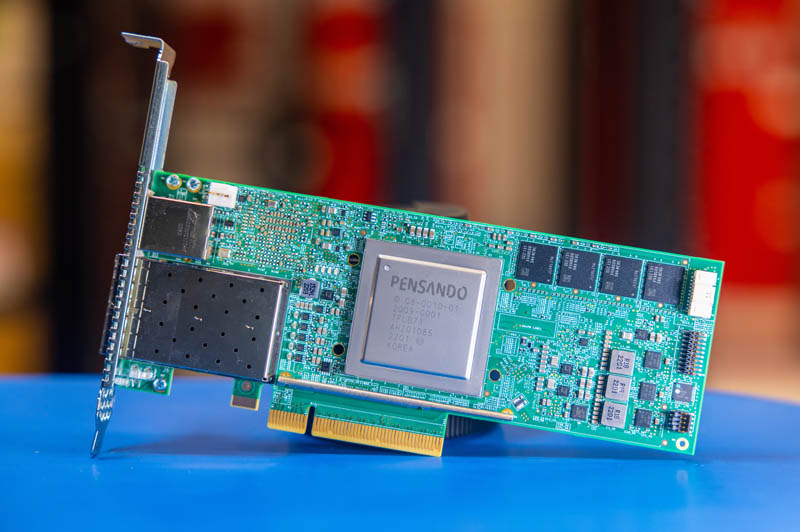
The rest of the memory is on the back of the card with the NAND storage and the Artix 7 FPGA.
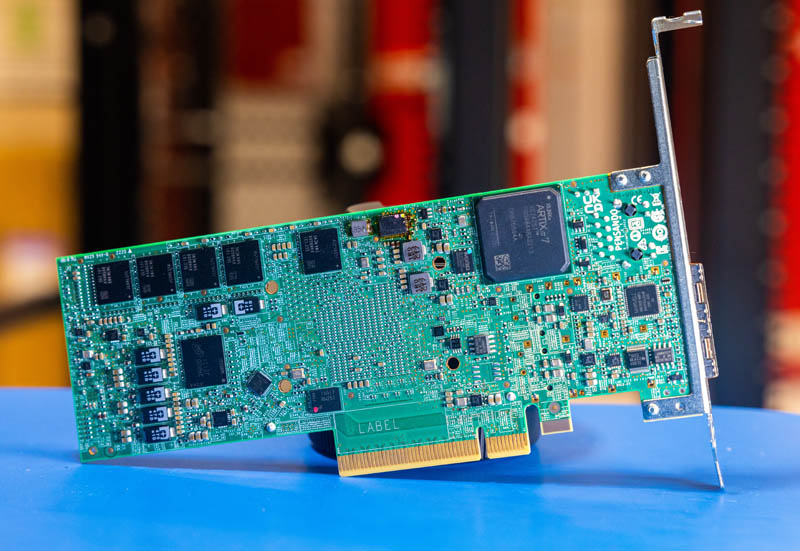
Here is a view of the management port that we are not using as well as the two 25GbE interfaces.
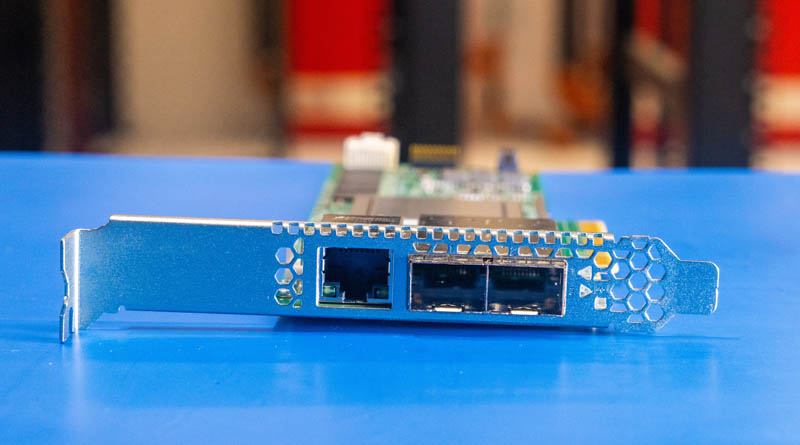
On the other end, we can see our management connector again.
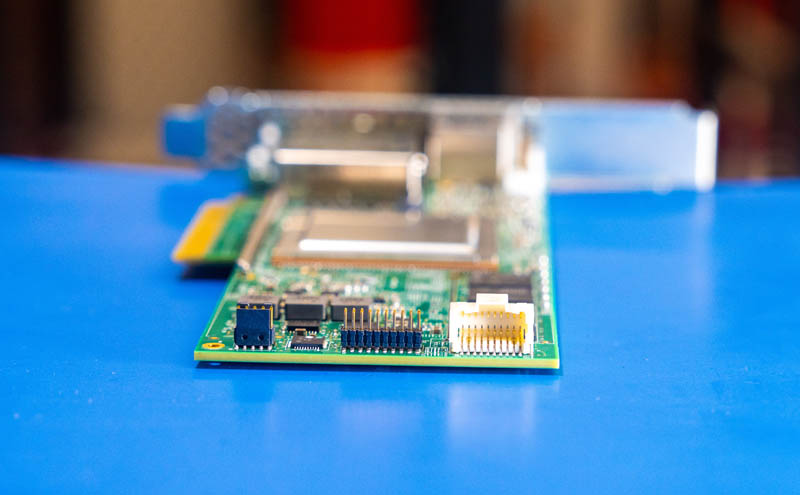
Now that we have seen the cards, it is time to get to using them.




STH is the SpaceX of DPU coverage. Everyone else is Boeing on their best day.
Killer hands on! We’ll look at those for sure.
This is unparalleled work in the DC industry. We’re so lucky STH is doing DPUs otherwise nobody would know what they are. Vendor marketing says they’re pixie dust. Talking heads online clearly have never used them and are imbued with the marketing pixie dust for a few paragraphs. Then there’s this style of taking the solution apart and probing.
It’ll be interesting to see if AMD indeed also ships more Xilinx FPGA smartnic or no?
They released their Nanotubes ebpf->fpga compiler pretty recently to help exactly this. And with fpga being embedded in more chips, it’d be an obvious path forward. Somewhat expecting to see it make an appearance in tomorrow’s MI300 release.
You had me at they’ve got 100Gb and nVidia’s at 25Gb
Does this work with Open Source virtualization as well?
Why does it say QSFP56? That’d be a 200G card, or 100G on only 2 lanes.
@Nils there’s no cards out in the wild and no open source virtualization project that currently has support built in for P4 or similar. It’s a matter of time until either or both become available but until then it’s all proprietary.
I also don’t expect hyperscalers to open up their in-house stuff like AWS’ Nitro or Googles’ FPGA accelerated KVM